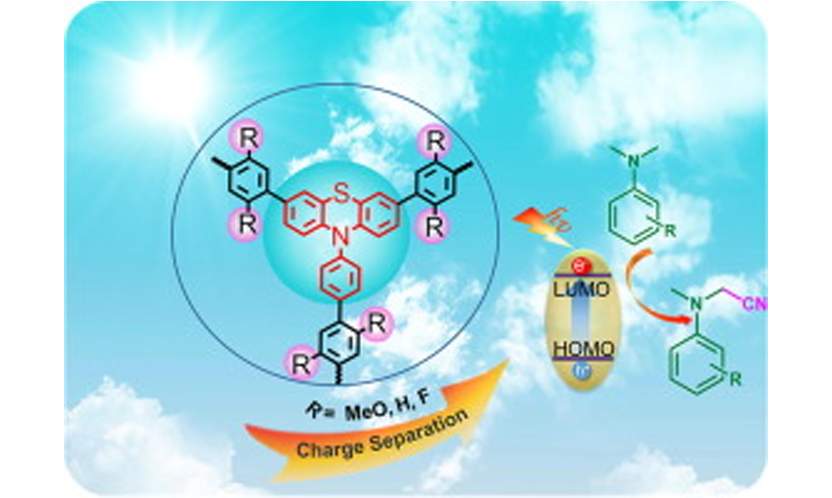Phenothiazine-based conjugated microporous polymers: Pore surface and bandgap engineering for visible light-driven aerobic oxidative cyanation
Photocatalytic aerobic oxidative cyanation of tertiary amines is a sustainable synthetic tool to synthesize α-aminonitriles that can be further employed as important intermediates for pharmaceutical and natural compounds production. Classical photocatalysts used for cyanation, like transition metals, usually suffer from low stability, high cost, and difficulty for separation from the reaction mixture. Herein, we report the task-specific design of a series of phenothiazine-containing conjugated microporous polymers (CMPs) and their performance as efficient heterogeneous visible light-active and reusable photocatalysts towards the oxidative cyanation of tertiary amines to α-aminonitriles. By fine molecular engineering with electron-donating and -withdrawing groups on the comonomer compositions, the pore surface and band gap of CMPs were well-tuned. The introduction of fluorine substituent induces the backbone local polarization enhancement, improves photo-induced charge separation, and leads to a strengthened interaction of the CMP matrixes toward the substrates, all of these were also well agreed with theoretical calculations. The fluorine-substituted CMP-PTZ-3 showed superior catalytic activity, extensive substrate adaptability for the photocatalytic cyanation of tertiary amines under mild conditions as well as outstanding recyclability. The high efficiency, good stability, and regenerability of the pure organic photocatalyst were demonstrated and this study provides new insights in designing high-performance photocatalysts through molecular engineering strategy.
Keywords: Conjugated microporous polymer; Phenothiazine; Photoredox catalysis; Cyanation; Heterogeneous catalysis

